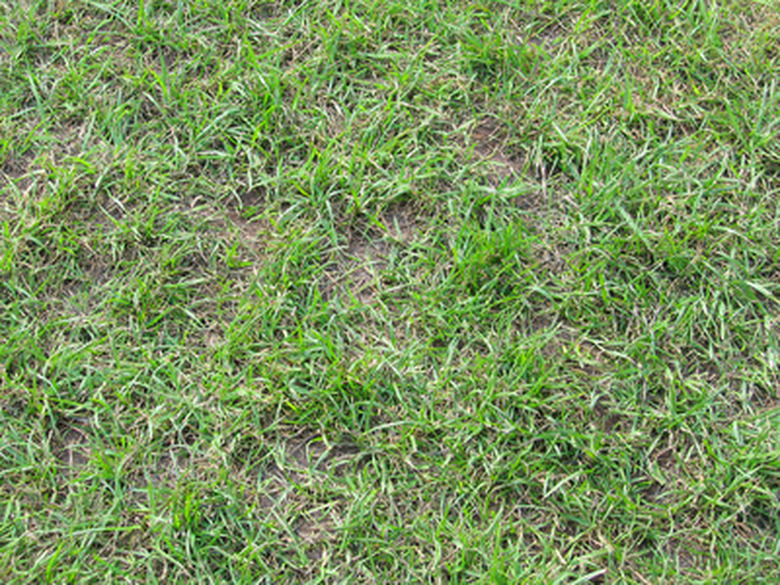The Life Cycle Of Lawn Grubs
Lawn grubs are a common pest of the home lawn. Grubs are the larval stage of the common May or June beetle or the Southern masked chafer. As they grow, they feed on the roots of the grass, causing large patches, browning and otherwise ruining the appearance of the lawn grass.
Laying Eggs
In late June or early July, according to Cornell University, beetles begin to leave the ground and feed on other bugs and plants. As they grow and feed in July, the females begin laying a series of 60 eggs under the soil. Adult beetles are nocturnal bugs and do not appear during the day, making detection difficult. Adults bury themselves under the dirt during the day, reports the University of Missouri.
- Lawn grubs are a common pest of the home lawn.
- In late June or early July, according to Cornell University, beetles begin to leave the ground and feed on other bugs and plants.
Larvae
During the first stage of growth the grubs feed on the roots of the grass in the lawn. Grubs feed close to the surface of the lawn and are most vulnerable to chemical control with pesticides at this time. Damage to the lawn is not easily recognized at this stage. Grubs often feed into August, when they change into their second stage of growth.
Winter
Grubs are vulnerable to the changing weather and die if caught by an unexpected frost. Grub will feed until the temperature begins to drop in autumn. Once ready, the grubs dig down into the soil to below the frost line, where they go into a third stage of life. Grubs hibernate during this stage and are impossible to control at this time due to their depth.
- During the first stage of growth the grubs feed on the roots of the grass in the lawn.
- Grubs feed close to the surface of the lawn and are most vulnerable to chemical control with pesticides at this time.
Spring
In late March and April, grubs move back up to the surface of the soil. Grubs begin to feed again, this time more aggressively. During the spring, damage is more apparent than root damage during the fall. Grubs feed now for between four and six months. The outer skin of the grub is thicker than in the fall, making chemical control at this time nearly impossible. Some species of larvae need more than one year to develop, so they hibernate in the soil again once the weather drops in the autumn.
Final Stage
Once larvae have overwintered, they move again to the surface for a brief feeding period before becoming a fully developed adult in September. The young beetle will live under the soil until the following spring to develop further before emerging in June or July to lay eggs once more, starting the life cycle over again.
- In late March and April, grubs move back up to the surface of the soil.
- Some species of larvae need more than one year to develop, so they hibernate in the soil again once the weather drops in the autumn.
